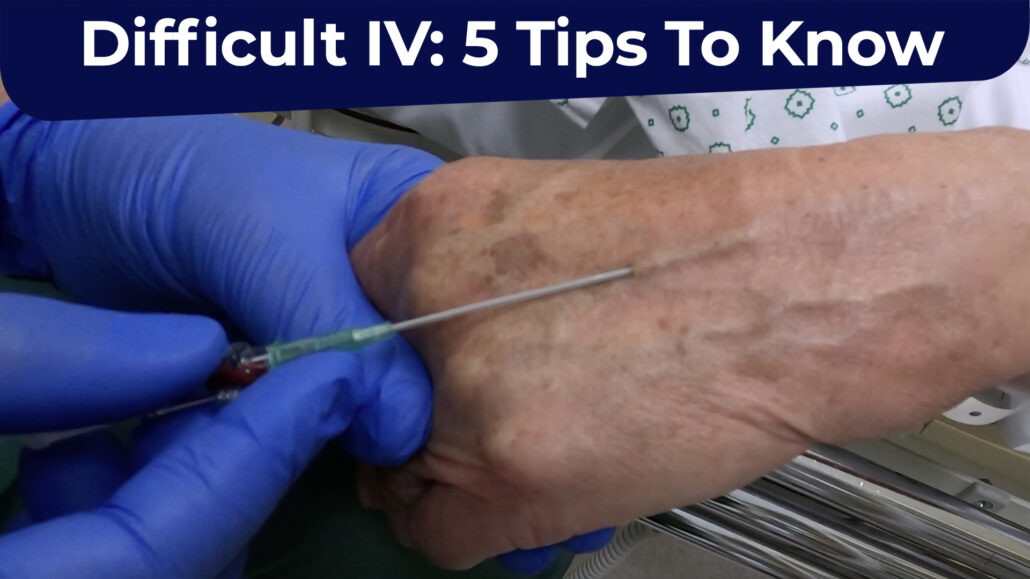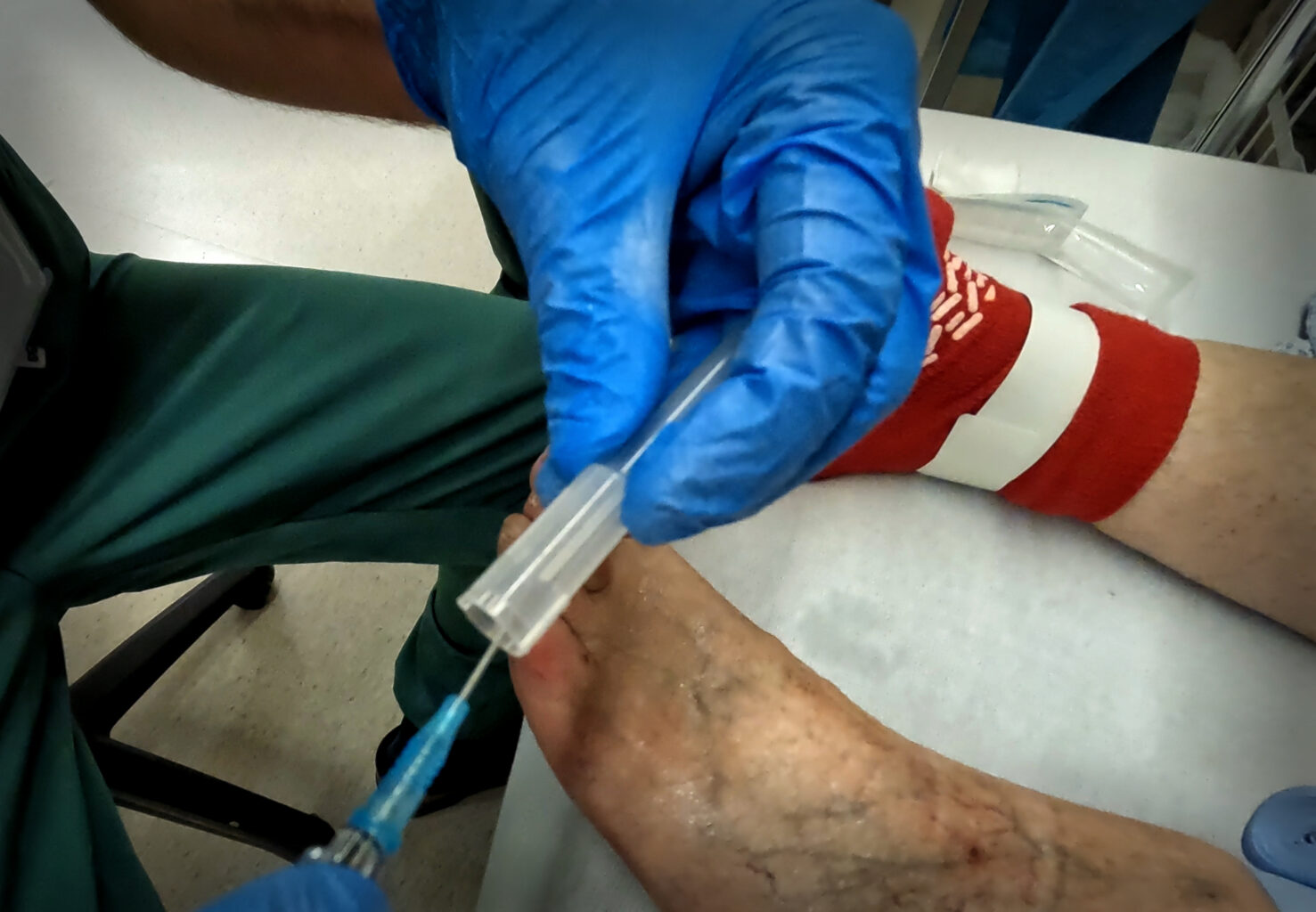
Difficult IV: 5 Tips To Know
A difficult IV access is never pretty. This was especially the case with the patient in NYSORA’s latest video that experienced several unsuccessful attempts by different personnel. Though ultrasound could have been used to insert a central venous catheter or a deeper seated IV, such as a brachial vein, the video demonstrates that a simple technique of using a rubber Esmarch can be very effective for peripheral venous access in most patients who have nearly impossible IV access.
Case Description
The patient was a 70-year-old woman with a hip fracture. During her admission to the emergency room, the nurses made several attempts to obtain IV access without success, as seen on her hand in the video. Keep reading to learn how NYSORA solved this problem.
Look For The IV Site
Examination of the patient’s lower extremities revealed that she was dehydrated, and her skin was very dry and fragile with black and blue marks as a testimony to multiple prior attempts at IV or blood draws for the labs. A quick ultrasound examination revealed several deep veins including the brachial vein, but short of central venous access nothing was available for easy cannulation using ultrasound guidance.
In fact, ultrasound may not be the best tool for cannulating superficial veins; some tissue is needed for needle travel for ultrasound guidance. Often, cannulation of the smaller peripheral vein without ultrasound may be the most convenient and quickest way to accomplish IV access.
5 Tips for Securing IV Access
- Consider using Esmarch to squeeze the blood from proximal to distal and fill up the peripheral veins so that they become visible and accessible for cannulation.

- Allow sufficient time for the veins to fill after the application of the tourniquet – or Esmarch in difficult cases – particularly with patients who are dehydrated.
- Use a low angle of insertion to prevent the passing of the needle through and through, which results in failure, causes hematoma, and makes the subsequent attempts even more difficult

- Consider bending the needle-catheter system to allow you to assume a very low angle of insertion for superficial veins.

- Insert the needle into the lumen of the vein FAST to avoid veins rolling, particularly in older patients with thick-walled veins (show some images or videos of these)
Let’s see how these principles were applied to the near-impossible vein cannulation video. A reversed Esmarch from the axilla was then applied just below the elbow. This was followed by a very diligent turn-by-turn application moving distally to squeeze the blood into the more superficial veins.
This reverse Esmarch technique allowed the usage of an 18 gauge catheter, even in this patient with difficult venous access. However, using a smaller gauge catheter, such as 20 or 22 where a large gauge IV catheter is not necessary may be better to save some veins for the future.
Although the practitioner in the video scrubbed his hands thoroughly prior to the procedure, gloves would be used in an ideal scenario. Unfortunately, in a difficult IV procedure, gloves may take away the edge of that finger feel, the Fingerspitzen gefüllt, as the Germans would say.
Join the Conversation
Is this technique still relevant in your practice? And what do YOU do when faced with near-impossible venous access? Head over to our YouTube video and leave a comment to join the conversation.





